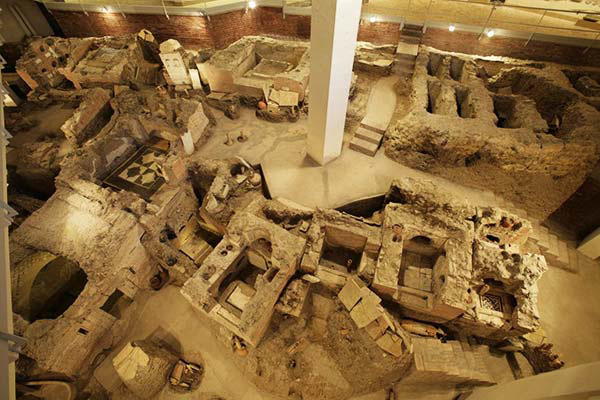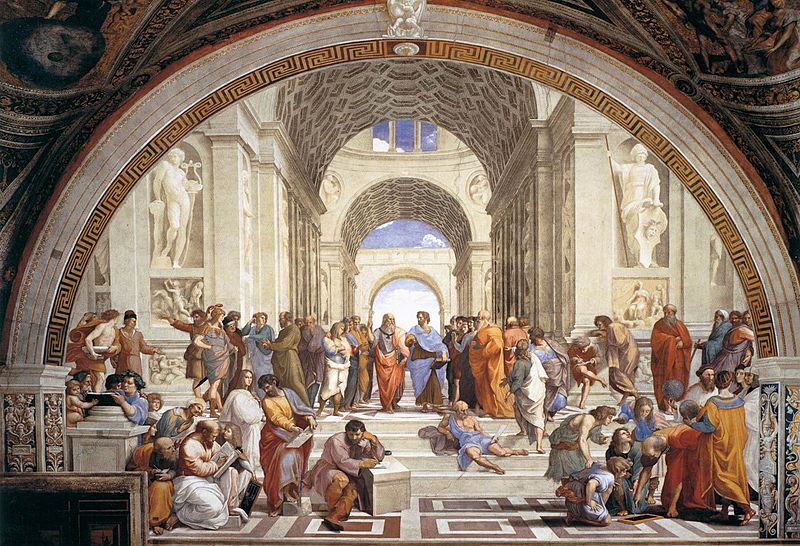Italy's best variety and value can be found in the following items: Clothes for men and women (dresses, shoes, gloves, silk ties, skirts), lacework, jewelry, leather goods (handbags, cases, boxes, luggage), ceramics, gold and silver items, alabaster; woodwork, straw, embroidery, glass and crystal ware.Venice is the center of the glass & crystal industry. Florence specializes in leather, gold, and ceramics.
Although you can't take all of the delicious Italian food home with you (except on your hips!), you can certainly take home some amazing bottles of olive oil or wine. One can purchase leather at a fraction of the cost of what you would find in the United States and with much higher quality. The best leather goods include jackets, handbags, briefcases, belts, shoes, pants and wallets. Italy is also known for its high quality gold. Look for shops that sell the coveted 18 karat gold or stunning white gold. Clothing made especially of silks and cashmere is also of supreme quality. In addition, you can look for some exquisite antiques and art. Original work and replicas are sold all over. You can find many fine shops along Via Del Corso, parallel to the Spanish steps in Piazza Di Spagna.
Ceramics: The town of Faenza, in Emilia-Romagna, has been the center of pottery making, especially majolica, since the Renaissance. Majolica, also known as faience, is a type of hand-painted, glazed, and heavily ornamented earthenware. Of course, you don't have to go to Faenza to buy it because shops throughout the country carry it. Tuscany and Umbria are also known for their earthenware pottery, carried by many shops in Rome and Florence.
Fashion: Italian fashion is world-renowned. Pucci and Valentino led the parade, to be followed by Armani, Missoni, Gucci,Dolce e Gabbana, Versace, and Ferre. Following World War II, Italian design began to compete seriously against the French fashion monopoly. Today Italian designers such as Krizia are among the arbiters of the world fashion scene. Milan dominates with the largest selection of boutiques, followed by Rome and Florence. Ironically, a lot of “French” fashion is now designed and manufactured in Italy, in spite of what the label says.
Glass: Venetian glass, ranging from the delicate to the grotesque, is world famous. In Venice you’ll find literally hundreds of stores peddling Venetian glass in a wide range of prices. Here’s the surprise: A great deal of Venetian glass today is manufactured not on Murano (an island in the Venetian lagoon) but in the CzechRepublic. That doesn’t mean that the glass is unworthy. Many factories outside Italy turn out high-quality glass products that are then shipped to Murano, where many so-called glass factories aren’t factories at all but storefronts selling this imported “Venetian” glass.
Gold: The tradition of shaping jewelry out of gold dates from the time of the Etruscans, and this ancient tradition is going strong today, with artisans still toiling in tiny studios and workshops. Many of the designs are based on ancient Roman originals. Of course, dozens of jewelers don’t follow tradition at all but design original and often daring pieces. Many shops will even melt down your old gold jewelry and refashion it into something more modern.
Lace: For centuries, Italy has been known for its exquisite and delicate lace, fashioned into everything from women’s undergarments to heirloom tablecloths. Florence long ago distinguished itself for the punto Firenzetombolo (pillow lace), macramé, and an expensive form of lace known as chiacchierino. Of course, the market is also flooded with cheap machine-made stuff, which a trained eye can quickly spot. Although some pieces, such as a bridal veil, might cost hundreds of euros, you’ll often find reasonably priced collars, handkerchiefs, and doilies in Venice and Florence boutiques. (Florentine stitch) made by cloistered nuns, although this tradition has waned. Venetian lace is even more famous, including some of the finest products in the world, especially
Leather: The Italians craft the finest leather in the world. From boots to luggage, from leather clothing to purses (or wallets), Italian cities – especially Rome, Florence, Venice, and Milan – abound in leather shops selling quality goods. This is one of Italy’s best values, in spite of the substandard work that’s now appearing. If you shop carefully, you can find lots of quality handcrafted leather products.
Prints & Engravings: Wood engravings, woodcuts, mezzotints, copper engravings – you name it and you’ll find it, especially in Rome and Florence. Of course, you have to be a careful shopper. Some prints are genuine antiques and works of rare art, but others are rushed off the assembly line and into the shops.
Religious Objects & Vestments: The religious objects industry in Italy is big and bustling, centered mostly in the Vatican area in Rome. The biggest concentration of shops is near the Church of Santa Maria Sopra Minerva. These shops have it all, from cardinals’ birettas and rosaries to religious art and vestments.
OPENING HOURS
Shops are open from 9am to 1pm and then from 3:30/4pm to 7:30/8pm. There are some variations in Northern Italy (Milan, Turin), where the lunch break is shorter and shops close earlier. Prices are reasonable and the quality of goods is very high. Department stores such as La Rinascente, Coin, Upim, and Standa and stores featuring major Italian brand names for fashion, silversmith, jewelry, and designer objects are found in many Italian cities and towns.
PAYMENT AND TAX
All major credit cards are honored in Italy. The exchange rate automatic currency conversion and low fees offered by credit cards make it the best way to pay for large purchases.
VAT or Value Added Tax (or otherwise referred to as IVA in Italy) is a tax levied by the European Union on the sale of most goods. If you are non EU resident, you are entitled to claim back the tax you pay on your purchases when you take them home. Your total purchase (VAT included) in a store must exceed 155,00 €.. It is imperative that, when purchasing an item, you fill out a special VAT return form stamped by the shop in which you are purchasing the items. This form and all receipts with clearly defined purchase prices and VAT information must be presented with the unopened purchases to the Customs office at the airport in your city of departure. The customs office will not accept receipts without the necessary VAT forms from the shop. In some instances, you will be entitled to receive a cash refund directly at the airport or some stores automatically reduce the price for you right there in the store. Be aware that if you do not return the forms within a certain time period, the store is entitled to charge you the VAT that they had originally taken off your bill.
You can carry merchandise purchased with you, or have it shipped home, whichever is more convenient.





